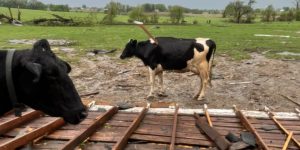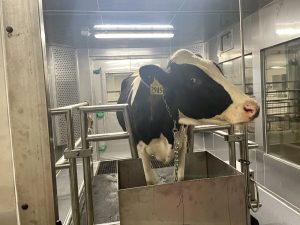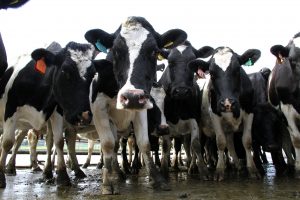
Tucker shared the results of her exhaustive review of published research on cattle lying behavior during a recent webinar sponsored by the Dairy Cattle Welfare Council.
In one study, cows were forced to stand for 4 hours, then fed. A control group was not forced to stand but also was fed at the same time. The cows that had been standing prior to feeding ate for an average of 29 minutes, while the control group ate for an average of 95 minutes.
“They were compensating for their lost resting time, which significantly cut into the period they devoted to eating,” said Tucker. “From these and other studies, our overarching conclusion is that cows desire rest, and will prioritize it over other needs.”
As another example, she shared a study that showed cows will choose to rest even in less-than-ideal conditions. “Cows don’t like to lie on concrete, but they like wet conditions even less” Tucker stated.
The study exposed a group of cows to the choice between a muddy corral or a concrete feeding apron. Cows initially deprived themselves of rest, spending almost 8 hours less time lying than a comparative group that was housed in a dry corral. But by Day 4 of the study, they craved rest enough to normalize their lying times by choosing to lie down on the concrete.
Based on her evaluation of lying time studies, Tucker offered the following, take-away advice for helping cows achieve the rest they need:
-Avoid forcing cows to stand for more than 3 hours. Common practices that may need to be modified are trips to and from the milking parlor, and time spent in headlocks for herd-health and reproduction tasks.
-Don’t interpret all lying times as standard. Lame cows will rest more than healthy ones, but in that case their extended lying time is not favorable. Grazing cows rest less than those in confinement, but this could be due to their more enriching environment and freedom to choose when and where they rest, and because they spend more time eating.
-Aim for at least 10-12 hours of rest per cow per day. More is better for healthy cows, but outliers may indicate sick or lame cows.
-Manage environmental issues. Although the cause is not completely understood, cows always will stand more when exposed to rain or heat stress. Shelter, shade, and cooling methods will help promote resting behavior.
-Space matters. Cows can’t rest well when they can’t locate a stall in which to lie down, so manage stocking density accordingly.
-Strive for comfortable resting surfaces. Cows desire soft, dry surfaces. They always will choose the driest option, and lying time goes down when moisture on the resting surface goes up.
Finally, Tucker issued caution regarding stall mattresses and mats. “These surfaces are desirable to cows and are not necessarily an impediment to lying time,” she said. “But they are associated with a significantly higher incidence of hock and knee injuries. They require a lot of bedding and maintenance to be safe.”























